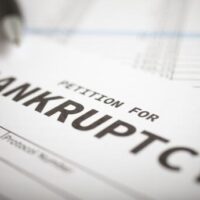Making the Most of Bankruptcy: Eight Things to Do After Your File

You just received your bankruptcy discharge; now it is time to start thinking about your future. With a solution to your debt, you may be wondering what to do next. Consider the eight steps listed below to move forward, rebuild your credit, and ensure a solid financial future.
-
Retain copies of your bankruptcy paperwork. While it does not happen often, creditors may still try to collect on a debt after it has been discharged, and they can get into serious trouble for doing so. If a creditor is harassing you after bankruptcy, your paperwork can help you prove that your debt has been discharged. It can also help you correct any errors on your credit report.
-
Check your credit report. As mentioned above, if there are any debts that were discharged by bankruptcy on your credit report that are still showing up as owed, your bankruptcy paperwork can help you sort out this error with the credit-reporting agency. Check your report a few months after your discharge to give agencies time to update your report.
-
Arrange to pay any remaining non-dischargeable debts. Bankruptcy cannot discharge things like student loans, certain taxes, restitution payments, and others debts. Contact creditors or taxing authorities to begin making arrangements for repayment.
-
Begin rebuilding your credit. Obtain a secured credit card to begin rebuilding your credit. Secured credit cards are different from regular credit cards in that they use money in a bank account as collateral for the card. Shop around when choosing a card and find one without excessive interest and fees, and make sure the card provider reports to all three credit reporting agencies. Use the card responsibly, using only 10-20% of your credit limit and making all payments on time.
-
Make timely payments if keeping a house or a car. It is crucial that you continue to make on-time payments on your home or vehicle to avoid foreclosure or repossession of your vehicle.
-
Set up a savings plan. As soon as you are able, start saving up for emergencies. Even if it is only a small amount per pay period, it will add up in the long run and you will thank yourself for it later.
-
Update your will. If you had a will before bankruptcy, it may need to be updated after the new changes to your financial situation.
-
Begin contributing to a retirement plan. Try to contribute as much as you are able to your 401K account, especially if your employer matches. If you don’t have a retirement plan through your employer, consider contributing to a no- or low-fee IRA account each pay period. Again, your savings will grow over time and you will be on the right track toward a more secure financial future.
The Los Angeles bankruptcy specialists at Wadhwani & Shanfeld take pride in helping people like you obtain the financial freedom they deserve. For more information, please contact our office at (800) 996-9932.
